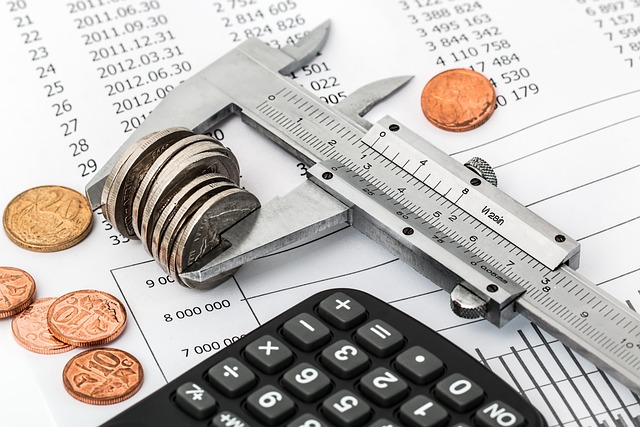Debt consolidation loans help individuals manage multiple high-interest credit card debts by combining them into a single loan with potentially lower rates. The main types are secured (using assets as collateral, often lower rates) and unsecured (no collateral, higher rates). Secured consolidation offers control, stability, and flexible terms but risks losing collateral; unsecured consolidates debt with more flexibility but higher default risk. The best choice depends on individual financial health and risk tolerance, with thorough evaluation of loan terms, rates, and fees crucial for effective credit card debt management.
Debt consolidation is a powerful tool for managing credit card debt. This article guides you through two primary loan types: secured and unsecured debt consolidation loans, helping you understand which option best suits your needs. We’ll explore how each works, their respective benefits and risks, and provide insights to compare and choose the ideal debt consolidation loan for consolidating credit card debt, offering a clear path toward financial stability.
- Understanding Debt Consolidation Loans
- Secured Debt Consolidation: How It Works and Benefits
- Unsecured Debt Consolidation: Risks and Advantages
- Comparing and Choosing the Best Debt Consolidation Loan Option for Credit Card Debt Consolidation
Understanding Debt Consolidation Loans
Debt consolidation loans are a financial tool designed to simplify and streamline multiple debt payments into one single loan with a lower interest rate. This approach is particularly beneficial for those burdened by high-interest credit card debts, as it allows them to consolidate credit card debt across different cards into a single repayment schedule. By doing so, individuals can potentially reduce their overall interest charges and make managing their finances easier.
When considering a consolidation loan, it’s essential to differentiate between secured and unsecured options. Secured loans require collateral, often in the form of a property or asset, which serves as security for the lender. Unsecured loans, on the other hand, don’t require such collateral but typically come with higher interest rates because of the increased risk to the lender. Understanding these nuances is crucial when deciding between consolidation options to ensure you choose the best fit for your financial situation.
Secured Debt Consolidation: How It Works and Benefits
Secured debt consolidation is a strategy that involves combining multiple high-interest debts into a single loan with a lower interest rate. This approach allows individuals to simplify their repayment process and potentially save money over time. Here’s how it typically works: You use an asset, such as your home or vehicle, as collateral for the new loan. This ensures the lender’s investment is secured, enabling them to offer better terms than unsecured loans. Once approved, you receive a lump sum to pay off all your existing debts, and you make payments on this new, consolidated loan instead of multiple creditors.
By consolidating credit card debt through this method, borrowers can benefit from reduced monthly payments, lower overall interest expenses, and the convenience of having only one payment due each month. It’s an effective way to gain control over overwhelming debt and improve financial stability. Additionally, secured consolidation loans often come with flexible repayment periods, allowing individuals to tailor their repayments based on their income and budget.
Unsecured Debt Consolidation: Risks and Advantages
Unsecured debt consolidation offers a straightforward way to combine multiple high-interest debts, such as credit card balances, into a single loan with a potentially lower interest rate. This approach can simplify repayment by eliminating the need to manage several creditors and minimize late fees or penalties for missed payments. However, unsecured loans carry inherent risks. Lenders may offer lower rates but often require no collateral, making them more vulnerable to default. If you fail to make payments as agreed, the lender could sue for the outstanding balance, impacting your credit score and potentially leading to wage garnishments or asset seizures.
Despite these risks, unsecured debt consolidation can be advantageous for individuals with good credit who are confident in their ability to adhere to a new repayment plan. It provides financial flexibility by combining debts into manageable installments, allowing you to focus on rebuilding your savings or investing while easing the burden of multiple monthly payments. Additionally, it may improve your overall credit utilization ratio if managed responsibly, positively influencing your credit score over time.
Comparing and Choosing the Best Debt Consolidation Loan Option for Credit Card Debt Consolidation
When considering a debt consolidation loan for credit card debt, it’s crucial to compare both secured and unsecured options. Secured loans are backed by an asset, typically your home or vehicle, which acts as collateral. This can often lead to lower interest rates but carries the risk of losing the collateral if you default. Unsecured loans, on the other hand, don’t require collateral and have higher interest rates due to the increased risk for lenders.
To choose the best option, evaluate your financial situation and risk tolerance. If you’re confident in your ability to repay and have a strong credit history, an unsecured loan might offer more flexibility with potentially lower monthly payments. However, if you have poor credit or limited assets, a secured loan could be a more viable—though risky—choice. Carefully assess the terms, interest rates, repayment periods, and any fees associated with each option to make an informed decision that aligns with your financial goals of consolidating credit card debt effectively.
When considering how to consolidate credit card debt, understanding the nuances of secured and unsecured loans is key. Secured options offer lower interest rates but require collateral, while unsecured loans provide flexibility without guarantees. After weighing the benefits and risks, individuals can make an informed decision that aligns with their financial goals and risk tolerance. By carefully evaluating these options, you can take a significant step towards managing and reducing your credit card debt effectively.
